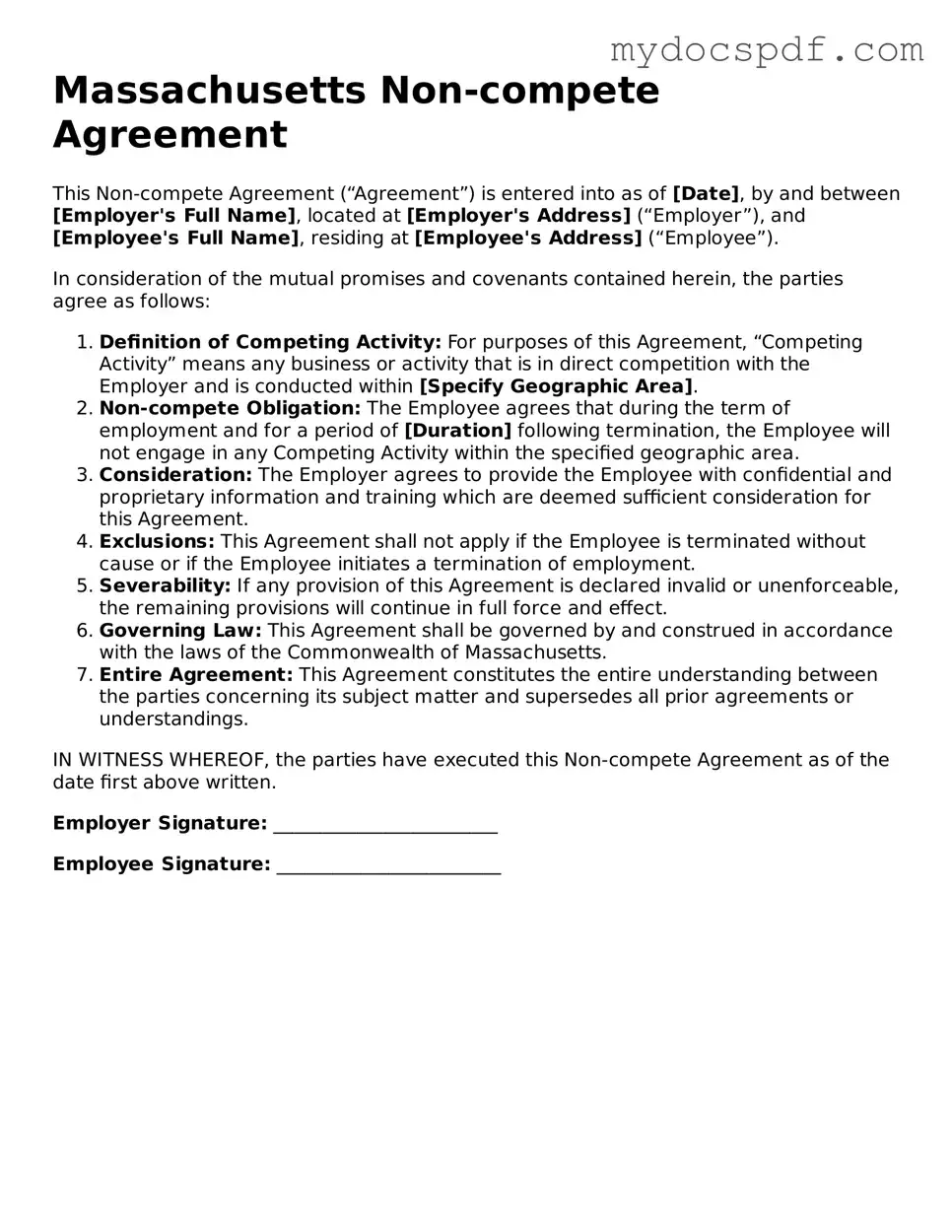Massachusetts Non-compete Agreement
This Non-compete Agreement (“Agreement”) is entered into as of [Date], by and between [Employer's Full Name], located at [Employer's Address] (“Employer”), and [Employee's Full Name], residing at [Employee's Address] (“Employee”).
In consideration of the mutual promises and covenants contained herein, the parties agree as follows:
- Definition of Competing Activity: For purposes of this Agreement, “Competing Activity” means any business or activity that is in direct competition with the Employer and is conducted within [Specify Geographic Area].
- Non-compete Obligation: The Employee agrees that during the term of employment and for a period of [Duration] following termination, the Employee will not engage in any Competing Activity within the specified geographic area.
- Consideration: The Employer agrees to provide the Employee with confidential and proprietary information and training which are deemed sufficient consideration for this Agreement.
- Exclusions: This Agreement shall not apply if the Employee is terminated without cause or if the Employee initiates a termination of employment.
- Severability: If any provision of this Agreement is declared invalid or unenforceable, the remaining provisions will continue in full force and effect.
- Governing Law: This Agreement shall be governed by and construed in accordance with the laws of the Commonwealth of Massachusetts.
- Entire Agreement: This Agreement constitutes the entire understanding between the parties concerning its subject matter and supersedes all prior agreements or understandings.
IN WITNESS WHEREOF, the parties have executed this Non-compete Agreement as of the date first above written.
Employer Signature: ________________________
Employee Signature: ________________________
